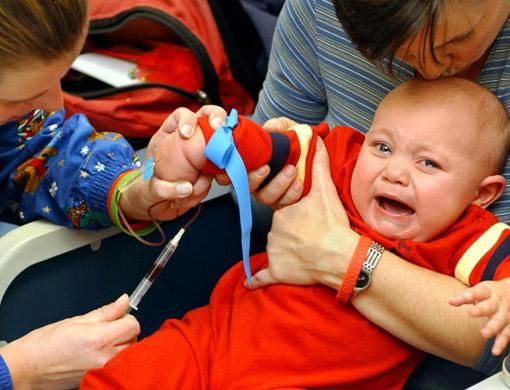Within hours of Kathleen Patricia Trebing's birth on December 12, 2002, her parents' joy turned to worry.
Everything about the delivery at St Catherine of Siena Medical Centre on Long Island, New York, had been normal.
Steve Trebing was convinced he was about to have another son and was surprised when the obstetrician said the baby was a girl.
An ecstatic Steve went home to tell the couple's then 2-year-old son, Calvin, he had had a sister.
Then, worry arrived with a nurse.
“Katie's blood tests are abnormal,'' she said. Specifically, the baby's haemoglobin count was low; she was not getting enough oxygen in her bloodstream.
In the nursery, Katie lay under an oxygen hood, her stomach heaving as she laboured to breathe.
Her mother Stacy called Steve, who arrived back at the hospital just as the doctor said: “There's a problem.''
Three months and many medical tests later, Katie's parents learnt their daughter had been born with a rare bone marrow disease called Diamond Blackfan anaemia.
Katie's bone marrow would never make the red blood cells that carry oxygen to the body's organs. Every month, Katie would need a blood transfusion, or she would die.
Such transfusions carry a high cost. Over time, iron builds up in the liver and heart, causing the organs to deteriorate. The toll could kill Katie by her forties.
A second treatment option, oral steroids, also poses serious side effects.
There was a third option, one that could cure Katie: a bone marrow transplant from a sibling who had inherited a specific portion of DNA that exactly matched Katie's.
Every cell in a human body has a DNA code on it, identifying it as a member of the club, so to speak.
If another cell appears in the body that does not bear the identical pattern, the immune system attacks it.
That is why bone marrow transplants from exact match siblings are the most successful.
Brother Calvin was not a match. So doctors offered the Trebings a final suggestion.
On the cutting edge of genetics and medicine, where science raises hopes for frightened parents of ill children, was a possible way to provide Katie with a perfect sibling match: Have another baby.
The conception of this new baby could not be left to chance, though, because the natural odds are that only one in four of the Trebings' offspring would be an exact match for Katie.
Stacy would have to undergo in vitro fertilisation to produce numerous embryos to choose from, increasing the odds of a match.
Then there would be another step. Scientists would pull one cell off each embryo at three days old and use a test called preimplantation genetic diagnosis, or PGD, to find that perfect match.
Only those embryos would be implanted in Stacy's uterus. This baby would be a “donor sibling,'' or, to some, a “saviour sibling''.
Joining the three procedures — fertilisation, diagnosis and a bone marrow transplant — was first done successfully in 2000.
Only 100 to 200 PGD donor children exist in the world.
A bone marrow transplant from this child would give Katie greater than 90 per cent chance of being cured. If it failed, she could die.
After the birth of the donor sibling, the umbilical cord blood is saved and eventually transplanted into the sick child through an intravenous line to produce healthy bone marrow.
In the best-case scenario, the donor child is not called upon again.
But in cases where the cord blood is not sufficient, the new baby's bone marrow would be removed from the hips and transplanted, a potentially painful procedure for the donor that is done in an operating room under general anaesthesia.
Steve and Stacy, both 33, thought about it for months. To the Trebings, it was an amazing idea: Create a life to save a life.
Ethical issues abound
As with many new reproductive technologies, moral, ethical and medical questions abound — for families and society.
“It's easy to say someone donated bone marrow or a kidney to a sibling and generally feel pretty good about it.
"But some people think it gets a little presumptuous to say: ‘You should be born for this purpose,''' said Dr Jeffrey Lipton, chief of paediatric haematology/oncology and stem cell transplantation at Schneider Children's Hospital in New Hyde Park, New York.
“This is an enormously complex ethical issue in our field. This is the topic of the next decade and it needs to be looked at critically.''
There is no government oversight of such births in the United States. And no country monitors what happens to the donor sibling after the child is born.
What becomes of healthy embryos that don't match the sick sibling? What if the sick sibling again needs help from an exact match donor in the future?
“Going through this I realised you cannot judge people unless you walk in their shoes,'' Stacy said.
“Never in a million years would I have thought that I would have IVF and pick an embryo out as a match for my daughter.
“Although I'm not a very religious person, I thought: ‘Should I be doing this? It's new. It's controversial.
"'There are people who think it's not the right thing to do,''' Stacy said. “Then I look at Katie.''



